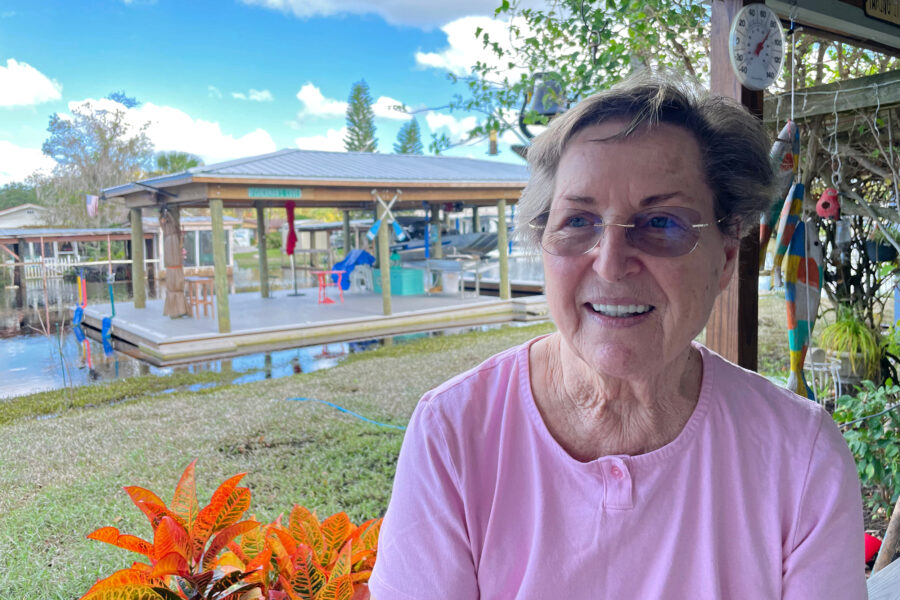New Study Finds Lakes in Minority Communities Across the US Are Less Likely to be Monitored
Advocates and researchers have long known that minority and disadvantaged communities are more likely to settle in areas with low air and water quality and less access to natural resources.
Now, new research in the United States finds that people of color live near lakes that are monitored for water quality much less frequently than bodies of water near white communities.
Unlike community green spaces, the subject of many environmental justice studies, “blue spaces” receive less attention. These findings on freshwater lakes come at a time when lakes across the U.S. are experiencing larger and more frequent algae blooms, often caused by agricultural and industrial runoff. Understanding a lake’s water quality is important for residents who use the lake for recreation or as a source of drinking water.
“Really the takeaway is that, across the [lakes in the] U.S., communities of color are being really undersampled,” said Jessica Díaz Vázquez, the paper’s lead author, who conducted the research while working at Michigan State University.
Explore the latest news about what’s at stake for the climate during this election season.
Díaz Vázquez knew from previous studies that communities of color tend to be burdened by poor water quality. She’s also from a predominantly Latinx community in Houston. Her experience growing up surrounded by the oil industry and her love for conservation and aquatic ecosystems led her to examine the intersection of these issues.
Díaz Vázquez and her fellow researchers intended to compare the quality of lakes across the country to the racial demographics surrounding the bodies of water. She quickly found that the data needed to answer this question didn’t exist.
“Does the water quality of lakes change depending on the race and ethnicity of the people living around them?” Díaz Vázquez asked. “We really couldn’t get to that because first we needed to know, is there even data to confidently answer that question? And what we found is that the answer is no.”
So she took a step back and decided to study how the amount of water quality data differed between different racial groups.
She used information from a dataset containing lake characteristic and quality information collected by state, local, citizen-science and tribal groups. Díaz Vázquez used chlorophyll-a readings, which help researchers understand the concentration of phytoplankton abundance, phosphorus concentrations and water clarity.
In general, she found that Hispanic people and people of color are less likely to live near lakes than white and non-Hispanic groups. But when it comes to monitoring the water quality in these communities, lakes in communities with a higher concentration of racial minorities are three times less likely to be monitored even once.
The data is much more sparse for long-term lake quality data, which spans years and allows researchers to identify trends in lake quality readings. In communities with more Hispanic residents and people of color, those lakes are seven to 19 times less likely to have long-term monitoring data. In total, there were only six lakes in the U.S. with long-term monitoring data in predominantly Hispanic communities.
Similar issues arise with air quality monitoring. The network of air quality sensors isn’t robust enough to recognize air quality issues at a scale smaller than the county level, and many of the sensors aren’t placed near minority communities.
This is the first study to examine the environmental justice outcomes of lake water quality monitoring on a national scale. Past research has found that in the Erie-Niagara watershed, areas that have lower water quality are in communities with higher concentrations of minorities. Another study in Michigan’s Saginaw River watershed found that areas with low water quality were near areas with vulnerable populations.
Melissa Haeffner, an assistant professor of environmental sciences and management at Portland State University who was not involved in the research, said the study was well done and highlighted a considerable and important gap in the data.
“There is a saying in planning, ‘you can’t manage what you don’t measure,’ meaning that if something is measured, it is made visible,” Haeffner said.
If water quality isn’t measured in these communities, then it’s possible that problems, such as dangerous algal blooms, will fly under the radar until they become a full-blown crisis, Haeffner said.
Water quality in lakes is monitored by a patchwork of national, state and local government agencies as well as tribal governments and nonprofits. Often these programs are funded by grants from the Environmental Protection Agency, which also conducts its own monitoring for specific projects. The U.S. Geological Survey, National Oceanic and Atmospheric Administration and the Army Corps of Engineers also manage their own water quality monitoring in lakes and streams across the country.
Much of the long-term data found in this study comes from citizen science programs, composed of local, non-expert volunteers who conduct the majority of lake sampling. Past research has shown that volunteers for citizen science programs tend to be white and therefore may choose sites of low environmental justice concern.
Díaz Vázquez said more work can be done to engage Hispanic communities and people of color on problems their local lakes face. She points to The Salton Sea Environmental Time Series, a community science initiative that manages air and water quality monitoring in the Salton Sea, a saline lake in southern California. The lake, which lies among a number of Hispanic communities, has been rapidly shrinking for years, leading to an uptick in harmful bacteria and toxic dust that blows off the dry lakebed.
Lake managers should also take steps to understand the community demographics near their lake and take that information into account when identifying gaps at the local, state and regional levels, Díaz Vázquez said. But water quality monitoring shouldn’t be left up to individuals, Haeffner said, even if that is a simpler solution.
“At the end of the day it really is on the part of the government, on scientists, on who’s collecting this data to do a better job of monitoring more comprehensively and knowing what’s falling through the cracks,” Haeffner said.
About This Story
Perhaps you noticed: This story, like all the news we publish, is free to read. That’s because Inside Climate News is a 501c3 nonprofit organization. We do not charge a subscription fee, lock our news behind a paywall, or clutter our website with ads. We make our news on climate and the environment freely available to you and anyone who wants it.
That’s not all. We also share our news for free with scores of other media organizations around the country. Many of them can’t afford to do environmental journalism of their own. We’ve built bureaus from coast to coast to report local stories, collaborate with local newsrooms and co-publish articles so that this vital work is shared as widely as possible.
Two of us launched ICN in 2007. Six years later we earned a Pulitzer Prize for National Reporting, and now we run the oldest and largest dedicated climate newsroom in the nation. We tell the story in all its complexity. We hold polluters accountable. We expose environmental injustice. We debunk misinformation. We scrutinize solutions and inspire action.
Donations from readers like you fund every aspect of what we do. If you don’t already, will you support our ongoing work, our reporting on the biggest crisis facing our planet, and help us reach even more readers in more places?
Please take a moment to make a tax-deductible donation. Every one of them makes a difference.
Thank you,
David Sassoon
Founder and Publisher
Vernon Loeb
Executive Editor
Share this article
Disclaimer: The copyright of this article belongs to the original author. Reposting this article is solely for the purpose of information dissemination and does not constitute any investment advice. If there is any infringement, please contact us immediately. We will make corrections or deletions as necessary. Thank you.








